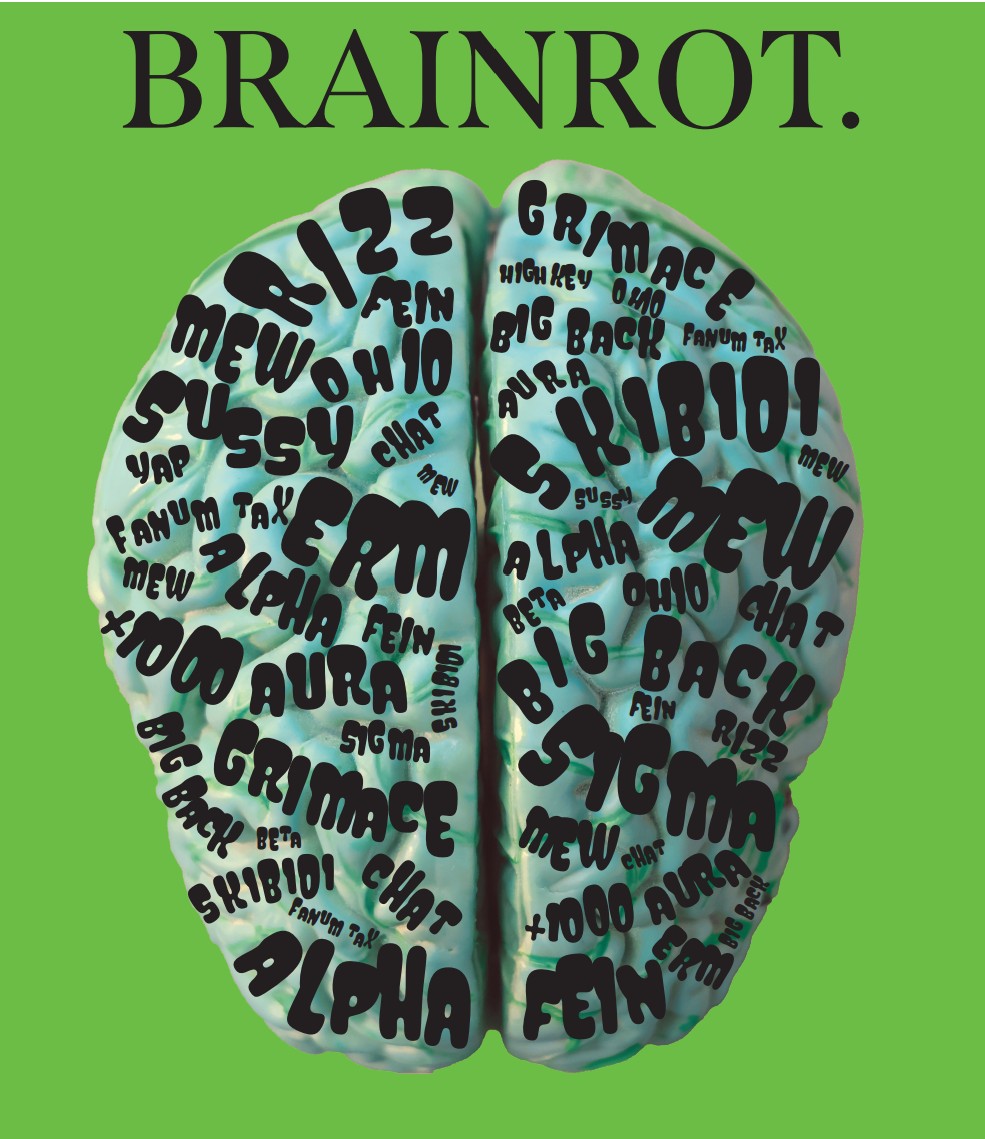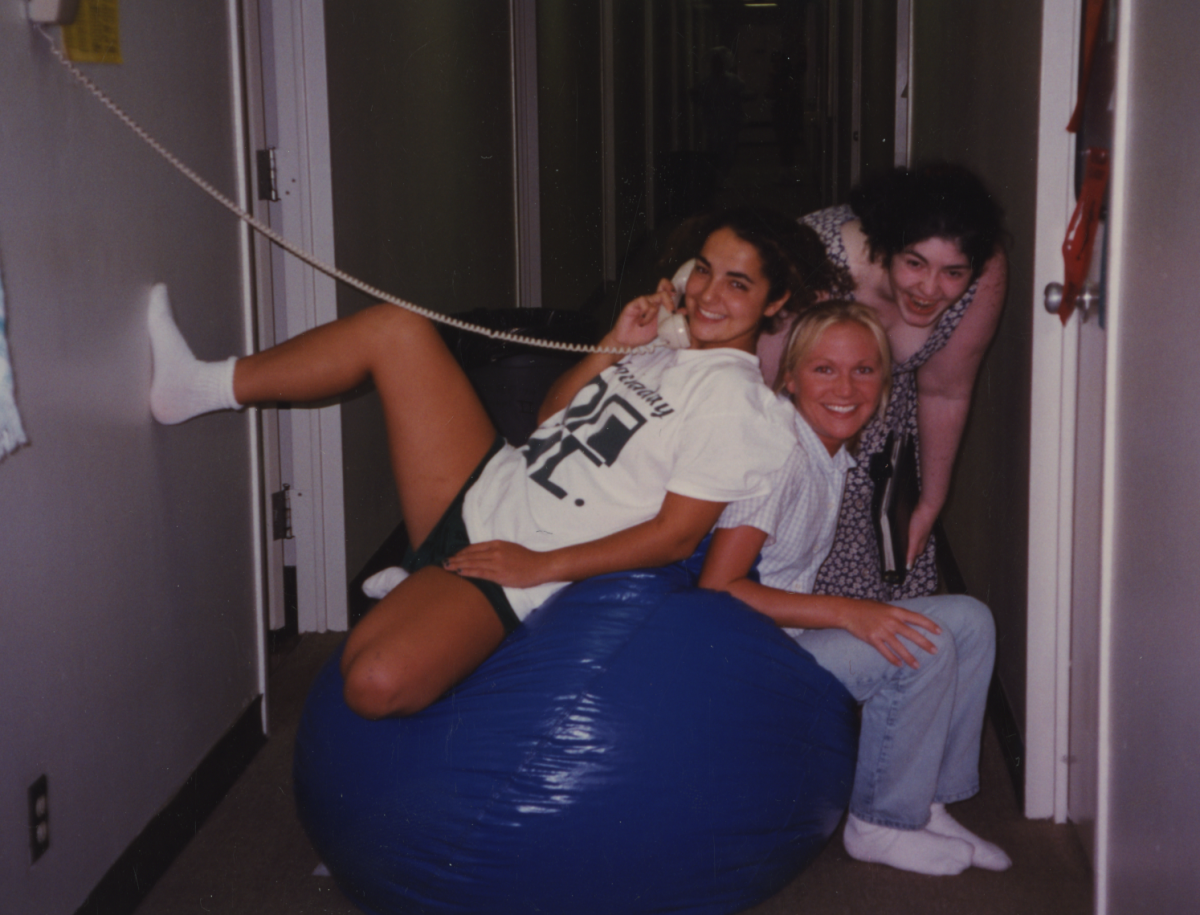 She slid her water bottle from the left to the right side of her desk. And then back. And then back again. She shifted her scrap paper to lay on top of her test. And then back. And then back again. “It was the last test of the quarter. It would make or break my grade—I was hanging onto an A-. And I couldn’t have a B. I went into the test, and there were two sections I couldn’t do. And I knew that if I didn’t get those right I would get a B. I was freaking out that I was going to fail,” junior Anase said. “I didn’t do as well as I needed to.”
She slid her water bottle from the left to the right side of her desk. And then back. And then back again. She shifted her scrap paper to lay on top of her test. And then back. And then back again. “It was the last test of the quarter. It would make or break my grade—I was hanging onto an A-. And I couldn’t have a B. I went into the test, and there were two sections I couldn’t do. And I knew that if I didn’t get those right I would get a B. I was freaking out that I was going to fail,” junior Anase said. “I didn’t do as well as I needed to.”
Nearly 60 percent of Upper School students cite academics as their number one source of anxiety (October survey of 100 Upper School students by The Fourcast). Some perform well under pressure, thriving in make-it-or-break-it situations. But many, like Anase, falter, succumbing to a fear of failure.
New to Hockaday as a seventh grader, junior Eliza arrived accustomed to receiving top marks without putting forth much effort. But after earning failing grades on her first two major assignments, her academic confidence lay in tatters. Fear and anxiety took over where security and assurance had once reigned.
“It was devastating. I didn’t even know I could do that badly,” Eliza said. “It was overwhelming, that mentality that no matter how much I study I’m still going to fail—that kind of mindset when you think ‘I’ve failed so many times. It’s just not worth it. I give up now.’”
Psychologist Amy Sheinberg, Ph.D. ‘82 explains that this fear of failure stems from a strong desire to succeed and a self-esteem based on the reactions and praise of others. “While I think the pressures on all teenagers are high,” she said, “they are particularly high in competitive environments like Hockaday where success is not just encouraged, but expected.”
Sophomore Emily attributes academic fears to the high value placed on a “perfect” transcript. “The environment here promotes being your best and working hard,” she said. “I think bad grades can feel like a representation that you didn’t work hard enough.”
But what if we had a new way to measure our success?
In beginning her term at Hockaday, Eugene McDermott Headmistress Kim Wargo aimed to instill just that. She asked parents and teachers to read Ph. D. Carol Dweck’s “Mindset,” which examines two different outlooks on life: the growth mindset and the fixed mindset.
The fixed mindset is based on the belief that personal qualities are rigid, that one’s abilities are immutable. This creates an urgency to prove oneself over and over in evaluations. “If you only have a certain amount of intelligence, a certain personality and a certain moral character,” Dweck wrote, “well, then you’d better prove that you have a healthy dose of them.”
The growth mindset, on the other hand, takes the stance that ability can be cultivated—everyone can change and grow through application and experience. People with a growth mindset tend to focus more on the process as opposed to hard and fast labels such as smart or dumb, winner or loser, accepted or rejected.
“The passion for stretching yourself and sticking to it, even when it’s not going well, is the hallmark of the growth mindset,” Dweck said. “This is the mindset that allows people to thrive during some of the most challenging times in their lives.”
While only 32 percent of surveyed students admit to fixed mindset tendencies, 95 percent feel fear of failure permeates multiple areas of their lives.
Are we being honest with ourselves?
The passion for stretching yourself and sticking to it, even when it’s not going well, is the hallmark of the growth mindset.
Senior Maddie admits to struggling with her propensity for the fixed mindset. “I worry more
about the grade, because I feel like the grade is more important,” she said. “It’s what you’re studying for. You’re not studying to have a learning process. You’re studying to make good grades.”
Freshman Lauren fights the same battle. “Last year in history I thought I was going to get a really good grade on a test; I prepared myself for that, and then I didn’t do well at all,” she said. “I thought maybe there was something wrong with the way I learn. I started thinking maybe there was no use in studying, because I’m going to get a bad grade anyway.”
Heeding the advice of her teacher, Lauren used her disappointment to “buckle down and force a change.” And after she put the effort in to reform her habits, she received better results on subsequent tests.
Director of Counseling Dr. Margaret Morse ’93 said the most frequent fear brought to her office is that of failure in academics—she tries to help students overcome the belief that grades are the ultimate measure of their success. Morse hopes students will learn to recognize the difference between excellence and perfection.
“In the mind of a Hockadaisy, doing their best is: ‘if I keep working hard, I’m going to get the A,’” she said, “so I’m going to keep working, working, working.”
But in reality, failure, or at least disappointment, is inevitable. And when disappointment does strike, Morse encourages students to see it as not the end of the road, but the launching point for growth.
“I worry a lot that if you are constantly looking for external gratification, for other people to tell you that you’re okay, you’re not going to know who you are inside,” she said. “I think you really have to work on how you view failures and restructure how you respond to them.”
This refocusing is especially crucial during the time of year when seniors are applying to colleges. “It’s about the opportunity of where you are going and what you can contribute at a place that wants you to be there,” Wargo said. “But that’s not to say I don’t want girls applying to the most selective colleges. I do. I want them to go and to grow and to achieve. And I want them to recognize that [where they go to college] doesn’t define their value as a person. And that’s a culture shift.”
Clare Sakovich ’11 initially lacked this outlook when she was not accepted to the Air Force Academy, a rejection that appeared to be the end to her lifelong goal to become an astronaut. “I thought it was the end of the world,” she said. “I had this whole life plan set out, and it was just gone.”
Sakovich accepted a spot as a physics major at Texas A&M University. But after attending “Fish Camp,” a four-day orientation program for incoming freshmen to learn about A&M and meet classmates, Sakovich was able to happily envision herself there.
“I realized I can still get to where I want to be,” she said. “I’ve gained an appreciation for the fact that you can’t plan out your entire life. You don’t know what’s going to happen, and whenever you go somewhere, you have to be open to the possibilities.”
Putting Dweck’s ideas into practice, Hockaday teachers strive to create a classroom where the opportunities to grow and learn are emphasized over the possibilities to succeed or fail. To Upper School history teacher Lucio Benedetto, a fear of failure ultimately equates to a hesitancy to take risks.
“If the competition becomes so great that you’re afraid to express your own passion or your own take on something you’re learning about, then it becomes harmful,” Benedetto said. “I think we teachers can talk about it, but we really have to model it to make students feel that they can take a risk and not be kicked to the ground for it.”
Benedetto takes the willingness to push one’s boundaries into consideration when grading and encourages other teachers to do the same. “Don’t just say ‘this isn’t a good paper.’ Say ‘this person is really trying to go a different route’ and encourage that,” Benedetto said. “I think we really have to promote that as teachers, as a school and as a community.”
Known for the mantra “I’ve studied hard. I know this. I can do this” that she says with her students before each test, history teacher Colleen Durkin also aims to aid students in framing a positive mindset.
“You’re never failing if you’re constantly learning,” Durkin said. “I think there’s a value in making mistakes. What I tell people is: when you were little, you didn’t just stand up. You fell, and you probably fell really hard. You made your parents gasp, and then you probably just sat back down and laughed at yourself.”
In Durkin’s classroom, there are no lucky charms, no frantically arranged and rearranged water bottles or test papers. It’s an environment where students find security in knowing that when they fall, they can take a moment to learn from their mistake. And then they will get back up, and they’ll keep moving forward.
Spotlight: Mindset in Athletics
In the spring of her sophomore year, junior Jackie ran in the New Balance National Track and Field Championship. The rigorous event included a one mile race in the morning and a two mile race in the evening. She went into the one mile event ranked number two in Texas. But even the most diligent athlete can experience a lapse in confidence.
“For the mile, I didn’t go in with a plan, because I was just so nervous,” Jackie said. “I didn’t know how to get rid of the nerves and just focus on the race.”
After placing sixth, a disappointing finish for Jackie, she vowed to rebound from her mistakes earlier in the day by coming into the two mile race with a plan, executing it and winning first place.
This she did.
“If you don’t go in there knowing what you are going to do, knowing what the course looks like, then you can easily choke,” Jackie said. “And if something goes wrong, you have to be able to make a move when you need to.”
Jackie Guevel ’10, Carnegie Melon University track team member and a runner since the seventh grade, also struggles sometimes to keep a cool head while she waits to take up her position on the starting line.
“I usually try to stay calm and collected and focus on what I need to do before a race, but at last year’s Nationals, in the second to last race there was a strong head wind, and I knew that I wasn’t really strong in going against headwinds in hurdling,” Guevel said. “Because I was focused on that, I ended up clipping one of the hurdles in the final race at Nationals.”
But Guevel too found resilience in her disappointment. “I was upset for a couple of minutes,” she said, “but then you have to push it out of your head, push it out of your thoughts. That race is over—move on to the next one. I ended up placing seventh in the next race, and I was very happy with that.”
Hockaday Director of Physical Education and Interscholastic Athletics Tina Slinker proposes a growth mindset in overcoming difficulties of the type that Jackie and Guevel experienced.
“There’s no doubt that fear of failure breaks down your confidence and your self esteem,” Slinker said. “So then you start focusing on every little thing instead of focusing on controls that you have, like the two things I think you can always demand out of yourself: your focus and your effort.”
Encouraging athletes to concentrate on the “controllables” and advancing in the skills of the sport, Slinker pushes athletes more in the process of improvement than the win-loss record.
“People think that all I care about coming from college coaching is winning, but what I really care about is self confidence, that you think you are greater than you were yesterday because of the discipline and effort you gave,” Slinker said. “And there is nothing better than that.”
Spotlight: Mindset in Relationships
Rejection. It’s universal, inevitable and arrives not only in the form of letters from faceless admissions officers. It comes directly from the people who we care about most, who we invest in relationships with, who we trust.
Junior Ashley knows this all too well.
“I had a bad experience in eighth grade at my old school where I felt ostracized,” she said. “My biggest fear when I came to Hockaday freshman year was that I was just going to screw everything up and end up alone again.”
Ashley found fulfillment in turning her disappointments in middle school into an opportunity for growth, a springboard for success at her new school.
“My bad experience was actually good for me because it taught me how to be a friend,” Ashley, now Form III President, said. “It showed me certain parts of myself that can come off rude, like giving unsolicited advice.”
Wargo specifically cites the ability to confront, push through and learn from conflict as essential.
“Girls in particular are afraid of dealing with something directly,” she said. “We might just internalize it and blame ourselves for whatever we’re feeling, but we won’t talk to the person who it’s really all about and figure out what it is that’s going on.”
Wargo encourages the growth mindset in seeing failures and conflicts not as the end of a friendship but as an opportunity to “create a scab.”
“We’ve let the problem happen and we’ve let it get well and then our skin is actually tougher where there is scar than it was before,” she said. “I really think that you don’t know how good a relationship can be until you test it.”
Among students surveyed, only 36 percent claim to experience a fear of failure in their friendships with other girls. Over twice as many cite a fear of failure when socializing with guys.
“You’re stepping out of your comfort zone to meet a new group of guys,” sophomore Tai said. “It’s really hard to get rejected.”
Morse hopes that girls will put these types of disappointments into perspective.
“Yeah it hurts. You got rejected. Let’s sit with that,” she said. “But don’t see it as a defining moment that just because one boy turned you down, no one wants to date you. To counteract that thinking, I try to help girls realize that they are accepted in many areas. I tell them to think of who their friends are, when someone paid them a compliment. Get them to see that they have had positive interactions.”
Aiming to ease fears in socializing with members of the opposite sex, Dweck points out that in the same way that one academic failure doesn’t define a person, neither does one blunder with a boy.
She explained that, when faced with a perceived failure socially, those with a growth mindset “tried to learn something useful about themselves and relationships, something they could use toward having a better experience in the future. And they knew how to move on and embrace that future.”
A new framing of failure presents the freedom to look at social interactions not as an opportunity for mistakes or awkwardness but as an opportunity for growth—an opportunity to be better the next time.
– Hailey














